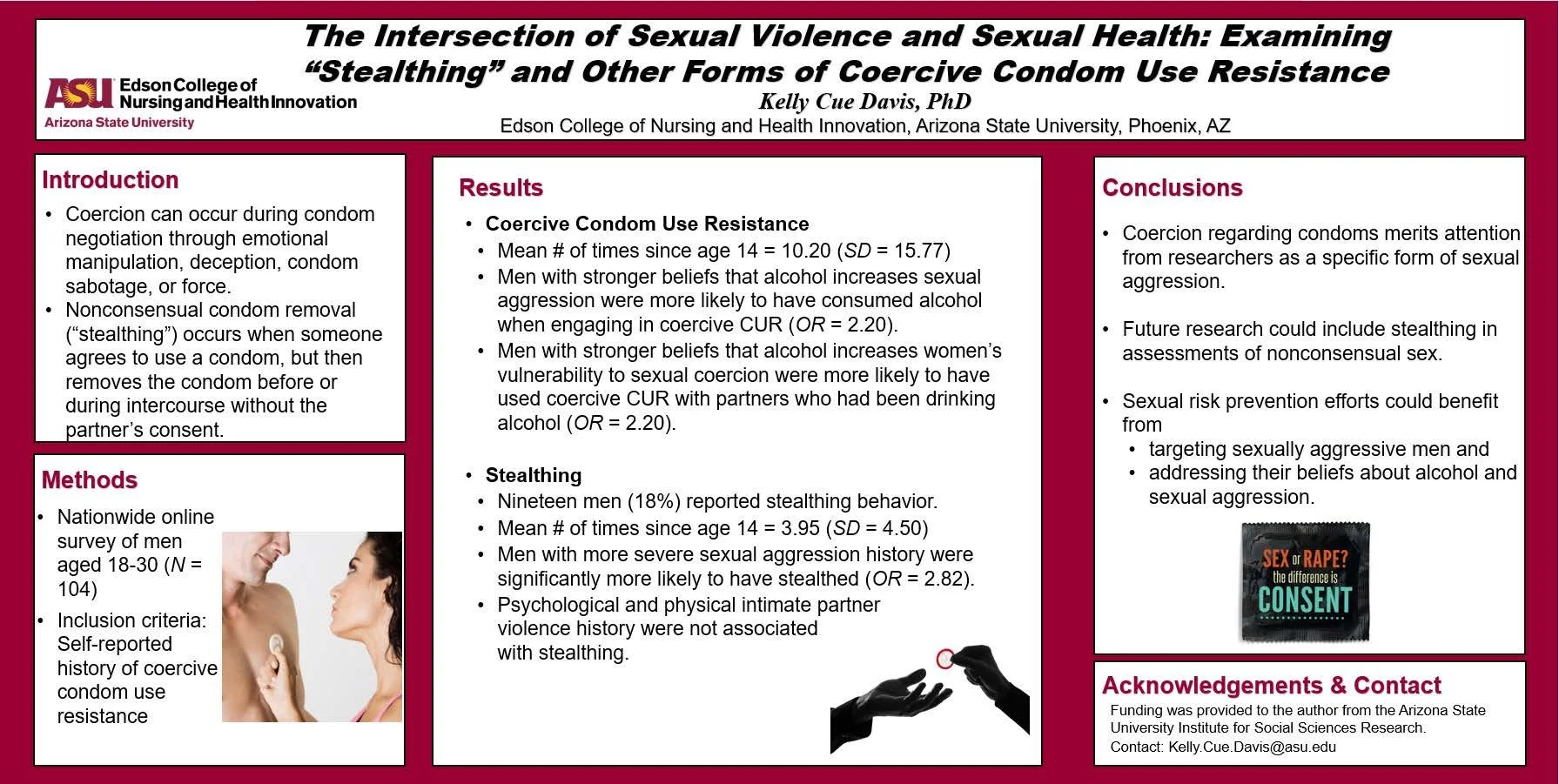Poster #3
The Intersection of Sexual Violence and Sexual Health: Examining “Stealthing” and Other Forms of Coercive Condom Use Resistance
By: Kelly Cue Davis
Abstract:
Nonconsensual condom removal - also termed “stealthing” – refers to a situation in which someone agrees to use a condom, but then removes the condom before or during intercourse without the partner’s knowledge or consent. Additionally, other forms of coercive condom use resistance, such as emotional manipulation, deception, condom sabotage, and physical force, have been identified but are under-examined. The present study investigated the factors associated with stealthing and other coercive condom use resistance tactics in a nationwide sample of 18-30 year-old men (N = 104) residing in the United States who reported a history of coercive condom use resistance. Participants completed measures assessing sexual aggression history, sexual aggression-related alcohol expectancies, and alcohol use during their most recent coercive condom use resistance event. Over 18% (n = 19) of the participants reported having engaged in stealthing, with those men reporting engaging in stealthing an average of 3.95 times (SD = 4.50), with a range of 1-21 times (maximum possible). Logistic regression analyses indicated that after controlling for social desirability, men with a more severe sexual aggression history (OR = 2.82) had significantly higher odds of having engaged in stealthing; psychological and physical intimate partner violence history was not significantly predictive of stealthing. Regarding all coercive condom resistance behaviors, participants with stronger beliefs that alcohol increases their likelihood of sexual aggression (OR = 2.20) were more likely to have consumed alcohol when engaging in coercive condom use resistance. Participants with stronger beliefs that alcohol increases women’s vulnerability to sexual coercion (OR = 2.20) were more likely to have used coercive condom use resistance with partners who had been drinking alcohol. Findings suggest that prevention efforts focusing on stealthing and other forms of coercive condom use resistance could benefit from targeting sexually aggressive men and addressing their beliefs about alcohol and sexual aggression.

